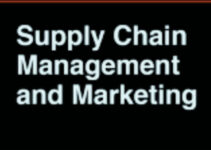The supply chain plays a key role in the food industry because it develops coordination and management among various activities and processes from supply to food consumption. An effective and efficient Food SCM process would ensure safe and cost-effective food delivery to the customers. Today, we’ll discuss food supply chain management; its definition, process, various types, benefits, and challenges.
What is Food Supply Chain Management?
Food supply chain management consists of various stages that the food items go through and move from the food producer to the end consumer. The food SCM has achieved tremendous growth in recent years, and that’s why it has become significant now more than ever. However, it is highly beneficial to the food production lines, and it means that the food chain comprises various fragmented elements. It has become difficult for customers to track their food back to the point of origin; because various suppliers and vendors transport them to the other part of the world.
Some foods are ready for packaging and distribution right after cultivation and plucking; the other food items require a lot of further processing. It helps them to approach the target customers with the proper system. However, various stages of food SCM are highly interdependent, and it is highly necessary for them to streamline the whole process for cost optimization and avoid inefficiencies.
Process of Food SCM – Stages
Some of the main stages involved in the process of food supply chain management are as follows;
Production
As the name implies, it is the stage where the process of food supply starts, when the producers source foods. Whether it is developed or fully grown food, the food supplies have to comply with the local and international regulations of food safety and quality.
Storage & Organizing
The harvested food has to go through the stages of storage and organizing. This stage would happen before processing the food supplies for further development.
Packaging & Processing
Whether you are collecting food from animals or plants, it requires processing and packaging to convert them into a proper edible form. It is significant that the required food items should meet the food safety and quality standards and regulations.
Distribution
Once the food becomes packaged and edible, then it reaches the distribution and transportation stage. It is where the producer distributes goods to the suppliers and retail stores.
Retailing
Retailing is the method of delivering goods from suppliers, vendors, and retailers to the end consumers. It comprises various stages and steps from gathering the food items and then selling them.
Consumption
It is the end stage in the supply chain process, where the customers buy food items from the retailers for consumption and usage.
Objectives of Food SCM
Some of the main goals and objectives of food supply chain management are as follows;
- Limited transportation delays by carefully dealing with customs clearance, documentation, and shipping
- Optimizing inventory level
- Avoiding quality complaints and delays by establishing communication among logistics, processing, and production units
- Decreasing costs throughout the SC network and process
- Making sure safety and quality compliance and it should met globally and locally
Benefits of Food SCM
Some of the main benefits of the food supply chain are as follows;
High-Quality Food
Proper food SCM plays a key role in producing safe and high-quality food that would satisfy the demands of customers. The hospitality and retail industries are the main buyers of food, and they want to purchase high-quality food from suppliers at a low cost; It allows them to buy goods at a competitive price. However, they don’t want to compromise on the quality of the product, because it helps them to avoid quality-related problems.
Food Safety
The food chain would ensure the safety of the food items, and they would trace it back to the manufacturer and the origin. There are some food items that customers are highly cautious about, and they want to comprehend the origin of the food and how the producer has produced it.
Environmental Impact
The consumer market has become careful about the environmental impact that particular food supply chains are having on the environment. That’s why they’re focusing on the Food SC network, it also offers them social, environmental, and economic benefits. It amplifies the connection where the food is coming from and establishes trust among customers.
Challenges to Food SCM
Some of the main challenges to the food supply chain are as follows;
Maintenance Cost
The maintenance cost for the food SC process is very high; because the maintenance cost consists of expenses like transportation, packaging, quality, and conditions. Cold chain food items are highly temperature sensitive and they require a lot of care.
Safety Issues
Food items should comply with various types of safety regulations. It consists of refrigeration equipment, warehouse, transportation, sanitation, and packaging safety regulations. SCM network can’t function properly without complying with the regulations.
Damaged Packaging
Improper management and excessive vibration would cause a lot of damage to the food packaging during transportation, loading, and unloading. It results in the form of food spoilage in the cold food chain items like ice cream, meat, fruits, and vegetables.
Condition Excursion
Many temperature and humidity-sensitive food items lose their freshness during transportation. Delayed or improper cooling and failed refrigeration equipment would increase the losses.
Conclusion: Food Supply Chain Management
After an in-depth study of the food supply chain management; we have realized that food SCM is highly significant for the growth of the food industry. If you are learning about the business of food SCM, then you should keep in mind the abovementioned process, objectives, advantages, and disadvantages.
Ahsan is an accomplished researcher and has a deep insight in worldly life affairs. He goes Live 3 days a week on various social media platforms. Other than research writing, he’s a very interesting person.


